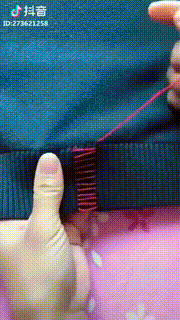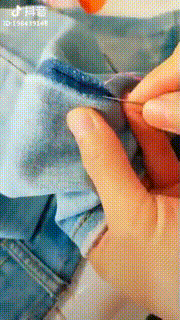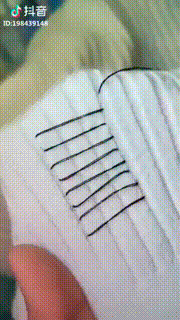I Feel Like Maybe Starting A Blog Again I Want To write In Depth Posts About Topics With Full Html Support
I feel like maybe starting a blog again I want to write in depth posts about topics with full html support And I also want to talk politics in a public space without all the problems of talking politics on social media. Especially I want to keep my tumblr account mostly non-political.
Also first time posting in months Again. Or even checking tumblr. But this is my only social network now (stopped using twitter even before the fiascos with Musk) and I kind of miss having that. But I also find myself with a lack of anything to share. Life has been pretty boring in most non-political regards.
More Posts from Enbylvania65000 and Others



the long tailed silky-flycatcher is a thrush-sized passerine bird found only in the mountains of costa rica and western panama. females are duller in coloration than males and lack the signature long tail feathers. this species primarily feeds on insects, as their name suggests, but also takes fruit, with a preference for mistletoe. these birds lay only two eggs in a clutch, which are placed in a delicate nest made of lichen.
The Middle Rodentocene: 10 million years post-establishment

Retro Rodents: The Furbils and Duskmice
By 10 million years PE the hamsters have diverged into many different forms, such as ungulate-like runners, mustelid-like predators or macropod-like hoppers. But while some of the resident rodents have further specialized away from the basic rodent body plan, two lineages, the furbils (family Caudatocricetidae) and the duskmice (family Cricetomuridae) are notable in having retained fairly conservative rodent anatomy, and are all the more successful for it: these two unassuming lineages have attained a diversity rivalling that of the jerryboas, and fill nondescript mouse, rat, hamster or gerbil niches all across the world.
The furbils, the more derived of the two lineages, are highly social creatures with long, tufted tails, displaying a very marked sexual dimorphism in many species, with dull, drab females and extravagantly-adorned males sporting striking markings and decorative tufts and manes of fur, which are used for display and attracting mates. Furbils tend to live in harems of several breeding females and one dominant male, while younger males are typically solitary and roam about searching for an opportunity to breed with any receptive females. Furbils are omnivores, feeding on insects, invertebrates, seeds, nuts and fruit, and males are known to attain their brilliant colors from pigments in their food: their colorful fur serving as an honest advertisement to their good health.
Male furbils are highly territorial, with the most brightly-colored and brilliantly-patterned males being the ones most attractive to females. This same coloration makes them more conspicuous to predators, as an unfortunate side effect: however, the fact that it gets them a higher chance to breed nonetheless allows them to more effectively spread their genes at the cost of individual longevity-- and in addition, essentially shows off their fitness by advertising an intentional handicap: a male that survives to breeding age even with such visible colors must be a very fit individual indeed, as far as females are concerned.

The most distinctive furbil characteristic of all is their long tail, which depending on the species serves a wide array of functions: for display, social signaling, or balance. One lineage of furbils, however, the subfamily Caudotomae, have a different, more drastic use of their tails: as a defensive measure used to divert predator attacks.
The Caudatomae are unusual among their furbil kin as they are solitary and come together only to mate, and as such lack the marked sexual dimorphism of their cousins. They have instead opted their tail into a lure, with the tuft at the end serving to draw predator attacks away from their body and head. Usually this is only meant to distract the predator and allow the furbil to escape: however, should the tail be caught, the furbil can actually detach it completely and flee from danger, as a special joint at the tail's base allows it to break off with little injury when sufficient force is applied. Unlike lizards who use a similar tactic, however, the tail-dropping is a one-time trick in the animal's whole lifetime, as it does not regrow once shed-- as such, it is a costly sacrifice that is only used as a last resort if no other means of escape is possible.
One very peculiar species, however, has compensated with the lack of mammalian regeneration with a downright absurd adaptation: multiple fracture points along the length of its tail. Known as the fuse-tailed dynamouse (Fragmacaudamys cabuum), it can fracture off its tail a maximum of up to three times, as its tail is comprised almost entirely of three very long and stiff vertebrae. Its reddish fur camouflages it well in Beta-twilight, the time when it is most active, but a conspicuous yellow tuft on the end of its tail serves as a predator distraction tool. If the tail breaks off at a joint the tail quickly heals the end of the stump and a new tuft of yellow hair soon grows around the injury, restoring the form and function to a now-shorter tail. Once a dynamouse has broken its tail three times, the tuft forms directly at the base of its rump, and while no longer to shed any more segments, can still serve as a distraction by making predators attack the wrong end and still giving the now-truncated dynamouse a fair chance to flee.

Just as strange and diverse as the furbils are the even more basal duskmice, small, stocky short-tailed rodents that still very closely resemble their hamster ancestors. Duskmice are a diverse group numbering nearly a hundred species, most of which are nondescript mouse-like seed eaters that hoard food in burrows and emerge at night and sometimes at Beta-twilight to forage, avoiding the many diurnal predators active during the day.
Some duskmice, however, have taken off to unusual niches, to take advantage of food sources beyond the reach of other hamsters. One genus, the molemice (Subterramys spp.) have adapted into specialized burrowers, developing large clawed forepaws for shoveling away dirt and hairless flat noses to push loose soil aside. They tunnel underground in search for roots, tubers and worms, and rarely ever come to the surface unless disturbed or if their burrows are flooded by heavy rains.
Another duskmouse lineage, the pondrats (Aquacricetus spp.), have instead taken to the water to feed on aquatic invertebrates and water plants that occur in abundance in freshwater bodies such as lakes and streams. They are the first hamsters on HP-02017 to specialize to a water-dwelling lifestyle, and as such have utilized a very unusual part of their anatomy to thrive in wet habitats: their cheek pouches. Acting as both flotation device and air storage, they can contract specialized muscles in their cheeks to compress the air, allowing them to sink and dive, and when returning to the surface quickly reinflate their cheek pouches to rise quickly to the top. Due to this specialization the cheeks can no longer be used as a food storage, and the pondrats instead hold food in a new different set of pouches that open lower in their mouths, surfacing every now and then to feed on their haul while floating at the surface.
▪▪▪▪▪▪▪▪
And thus with the duskmice ends the list of diversity in the Middle Rodentocene, the peak of speciation in a world of the small and scurrying. Our next stop will be at the Late Rodentocene, 20 million years PE: a time of even more diversity, but one that heralds the end of an age-- and a new promise of even greater things to come.
▪▪▪▪▪▪▪

The Indian side of the Indo-Gangetic plains, one of the most populous patches on Earth and home to over half a billion people. Each white dot is a human settlement.

i don’t have anything grand for the 13th anniversary, but here’s a drawing i got done of my favourite bot earlier. happy anniversary spg!! 💘
don’t trace, copy, or steal.
REBLOG IF IT IS OKAY TO COME INTO YOUR INBOX AND SAY THE RANDOMEST SHIT I CAN THINK OF BECAUSE I REALLY WANT TO INTERACT WITH YOU.

Loud noises can be scary when you’re just a little cat




SINCE WHEN CAN BOTS CREATE POLLS??? EXCUSE ME?? ALSO WHAT ARE THESE OPTIONS?
“The average US president has been convicted on .75 felonies” factoid isn’t true. average US president has been convicted on 0 felonies. Felonies Donld, who has been convicted on 34, is a statistical outlier adn should not have been counted
-
 isactuallyabear liked this · 2 years ago
isactuallyabear liked this · 2 years ago -
 enbylvania65000 reblogged this · 2 years ago
enbylvania65000 reblogged this · 2 years ago -
 enbylvania65000 reblogged this · 2 years ago
enbylvania65000 reblogged this · 2 years ago -
 enbylvania65000 reblogged this · 2 years ago
enbylvania65000 reblogged this · 2 years ago
